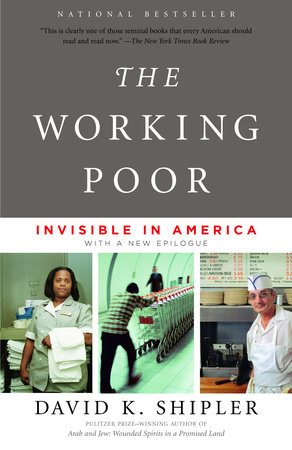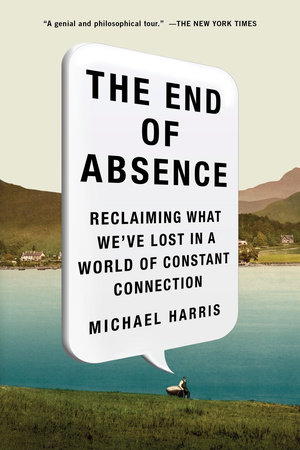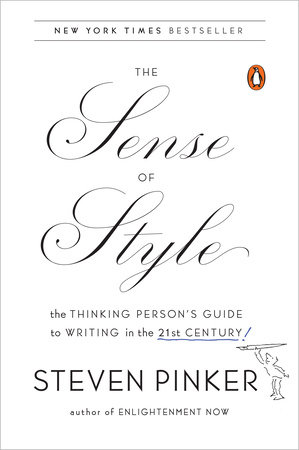A Conversation with David K. Shipler
Q: In the mid-1990s, while many Americans were celebrating their growing financial prosperity, you decided to explore the lives of working Americans living in poverty. Yet, you write in The Working Poor: “Poverty is an unsatisfying term, for poverty is not a category that can be delineated merely by the government’s dollar limits on annual income. In real life, it is an unmarked area along a continuum, a broader region of hardship than the society usually recognizes.” Can you tell us more about how you’ve learned to define poverty? If a worker achieves a certain level of income, what makes him or her poor?
A: If you look only at income, you miss a lot of what poverty is about. Poverty is not just financial but also psychological, not just absolute but also relative, not just a lack of comfort but also a lack of opportunity to participate fully in a society’s benefits. The financial aspect of poverty comes in several parts—not just income, but also net assets. Someone who looks good in the census tables by earning $30,000 may actually be in deep trouble, owning no home and owing tens of thousands in credit card debt. Someone who has food and water and shelter—the absolute essentials—may live in relative hardship on the margin of American society, where missing one paycheck can bring catastrophe. That edge of extreme anxiety colors people’s ability to function as workers and as parents, and creates a cycle that is hard to break.
Q: You noticed in your research that, while many people (social workers, educators, health care professionals) spend their careers trying to help the poor, the one thing they rarely do is approach employers to provide better wages, benefits, and more family-friendly hours. Why this reluctance?
A: It may be the society’s deep regard for private enterprise that leads most of them to see ultimate justice in the free market, from which there is no appeal. They understand the competitive pressures on business—or they see entrepreneurs as greedy–and don’t expect employers to be any more generous than they have to be. That’s why laws and labor unions exist, to demand more of business that it would otherwise provide. But I think those in the helping professions might be surprised by how far they could get with some employers, if they tried making pleas in specific cases.
Q: You point out that few people who protest against globalization realize that they don’t have to look outside the U.S. to find sweatshops. Where in the U.S. did you find them, and how do they manage to operate given our labor laws?
A: I found sweatshops especially rampant in the Los Angeles garment district, where small companies materialize and evaporate quickly, and employ mostly undocumented immigrants. Dangerous, low-wage working conditions exist throughout the U.S. in many industries. Labor laws are easily evaded, simply because the U.S. Labor Department and most state agencies don’t have enough inspectors for proper enforcement. The Labor Department has even posted on its Web site tips on how employers can avoid paying overtime. One recommendation: reduce hourly wages the equivalent amount of the overtime pay. In other words, the Labor Department suggests that low-wage employees work more hours for the same pay.
Q: The migrant farm workers you interviewed had managed to obtain false security cards and green cards. They and their employers knew the cards were fake. Why and how does this system operate? How do you think these migrant workers would be affected by President Bush’s proposal to give renewable visas to illegal immigrants?
A: Forgery networks operate wherever there are illegal aliens, and since employers are rarely prosecuted for hiring undocumented workers, they have no motivation to do careful checks. Farmers in North Carolina told me that they couldn’t operate without illegal Mexican laborers. The same is true far to the north. I remember one summer hearing two news reports in Maine. First, the blueberry crop was one of the best ever. Second, state troopers and immigration officials had set up roadblocks on the Maine Turnpike to intercept illegal aliens coming to harvest the crop! So, we work at cross purposes with ourselves. In theory, the Bush proposal would resolve the conflict by matching foreign workers with the country’s labor needs. It will be helpful if the workers are permitted to move from job to job, and if its detailed mechanism doesn’t turn it into a bureaucratic mess that most workers and employers will want to avoid.
Q: Employers complain that they can’t find enough workers with basic reading and math skills, yet they still hire such people for janitorial and food service jobs with little or no chance for advancement. What could be done differently to improve the skills, and thus the career prospects, of these workers?
A: Many employers also say they don’t need workers with the “hard skills” of reading and math, but rather with the “soft skills” of punctuality, diligence, anger management, and the like. To improve life opportunities, we need a broad system of vocational schools, such as those in much of Europe, involving both private industry and boards of education. These would teach young people who don’t go to college, many of whom don’t have marketable abilities even if they graduate from high school with few marketable abilities. The U.S. has adopted a “college-for-all” approach that leaves many with neither the diplomas nor the skills. They can’t compete, and they fall through the cracks of the global economy. For older workers, a more extensive network of solid job-training programs, tightly linked with local business, has to teach both hard and soft skills and prepare people for jobs that actually exist. Such programs also need to boost self-esteem and reduce fear of the workplace, two psychological obstacles to workers’ success.
Q: How does an immigrant family make it in the U.S.? Most face significant debt, lack of education, and language barriers. What must a family do to overcome these barriers rather than remain in perpetual poverty?
A: The successful immigrant families I found seemed to possess three important characteristics: English, education, and multiple wage-earners. Learning English is essential to open opportunity in the U.S. Without the language, they’ll be confined to a ghetto of their compatriots in marginal jobs. Higher education is a prerequisite to upward mobility, especially for the second generation. And a household where everyone works, even at minimum wage, collects enough cash every week to build savings, which avoids indebtedness and can bring an enhanced lifestyle. There are many less tangible qualities as well: thrift, a relentless sense of purpose, a belief in self, a tireless resistance to defeat. Immigrants who have not learned their own language well, who can barely read and write in Spanish, say, usually have immense difficulties learning English.
Q: What about the emotional dynamics of impoverished families? Several of the individuals you profile in the book have struggled with domestic abuse and neglect. This is a sensitive topic because impoverished families are often associated with dysfunction. What’s true? What’s exaggerated? Is there a strong link between poverty and hostile households?
A: I can’t say that poor families are more inclined to suffer domestic abuse and dysfunction. I’m quite sure, though, that such problems are more damaging to poor families than to the affluent. The poor, living on the edge of crisis, are as vulnerable to a reversal as a person with a rundown immune system is to disease. Problems interact with one another, magnify one another, and create chain reactions. An editor with family problems will get more leeway on his job than a janitor will. Affluent families can buy help—from child care to therapy–and can wall off one difficulty from another. Many poor parents are highly stressed and experience untreated (and perhaps undiagnosed) clinical depression. Many poor mothers told me that they had been sexually abused as children, and we know that such an experience can lead to emotional closing down, a sense of powerlessness, and difficulties forming long-term relationships, especially with men. I don’t think we know whether the incidence of sexual abuse is higher among the poor than among the rich. However, I think it’s reasonable to believe that the impact of the abuse is more damaging to life opportunities among the poor.
Q: Over 40 million Americans have no health insurance, and those at the very bottom of the pay scale can be devastated by an inability to afford treatment. Is there a realistic way to provide affordable health care to so many people?
A: Of course. Dislodge the health insurance system from the workplace and create a single-payer (government) or combination of private-government insurance to cover everyone. It would probably cost the country less in the long run—certainly not more than we’re paying now, if we include emergency room visits, absenteeism, birth defects, and other results of inadequate care. There is no rational reason why we should get health insurance through our jobs, any more than we should get auto insurance that way. At the moment, actually, those at the very bottom, covered by Medicaid, are better off than many who work but who can’t afford the premiums their employers charge.
Employer-based insurance, whose costs have soared, also burdens small business excessively and increases the risk of entrepreneurship.
Q: What about the link between poor housing and poor health? How can we secure decent housing for all low-income workers?
A: The spike in children’s asthma has been attributed in large part to deteriorated housing, where mold, roach sheddings, mites, and dampness trigger attacks of the disease, which send kids to hospitals at great expense. Crowded housing also creates stress, and brain scientists are beginning to understand the neurological connections between stress and long-term cognitive impairment. Better housing will require major investment by government. Again, it may save money in the long run, but making those savings visible will be difficult, and the effort will be a hard sell politically. Section Eight vouchers, used by the poor to supplement rent, are a good way to start, because they can be increased simply by an infusion of more dollars. Government construction of public housing—but not huge high-rises such as some in Chicago and New York—will be unavoidable. Dispersing the housing in more affluent communities is desirable, too, because the distillation of the deeply poor in concentrated projects has been damaging. Dispersal is hard to make happen politically, however. Then, too, existing housing could be brought up to standard by vigorous code enforcement, and perhaps low-interest loans to landlords.
Q The instability of impoverished households affects the performance of poor children in school, and these struggling young students find it difficult to believe that education will truly bring them opportunities. Can better teaching and more funding for education make a significant difference?
A: Yes, but education is an area where only broad assaults on a full range of problems will make real change. Without concentrated assistance for poor families outside of school, more funding may have only marginal effect. If a kid comes to school hungry, she’s not going to learn well. Learning is discretionary, says Dr. Deborah Frank, a noted pediatrician. It happens only after you’re well fed, safe, and warm. Schools need to become gateways through which families can pass into a broad array of services, from nutrition to housing to parenting instruction.
Q: You researched programs that train ex-welfare recipients for the workplace. Are these programs successful? By the standards of employers or employees, or both? What are the key components to successful training programs?
A: Successful programs train the whole person, not just in how to operate a lathe or a computer, but also in how to engage courteously with others, how to speak and work intelligently, and how to feel a sense of worth. Employers who complain that people don’t call when they’re not coming to work often don’t realize, as one low-income woman told me, that many people don’t think they’re important enough for their bosses to care. So, training has to give them a sense of value, and also has to teach employers what’s going on for folks who’ve failed again and again and again—in school, in marriage, in child-rearing, in work.
Q: Despite shifts in U.S. federal and state administrations over the past few decades, you contend that neither the liberal nor the conservative agenda for dealing with poverty is sufficient. In this election year, is there a chance for that to change? How?
A: Both liberal Democrats and conservative Republicans have it wrong, in my view. Each sees only a piece of the problem, and therefore just a piece of the solution. Liberals are partly right when they blame private industry for exploitation and blame government for inadequate social programs. Conservatives are partly right when they blame individuals for mistaken decisions and blame decaying families for the erosion of values needed for success. To see the reality, we need to see through both of these lenses, not just one or the other. Liberals and conservatives should stop shouting at each other and start working with each other. They should borrow from the each other’s legitimate ideas to mount a broad attack on the wide spectrum of problems facing the working poor. Will this happen in an election year? Only if we, the people, demand that our candidates reach past ideology and partisanship to address an issue that shames us all, as a whole nation.














